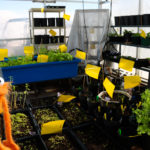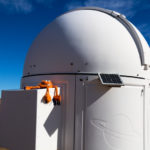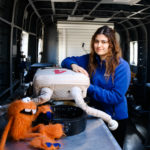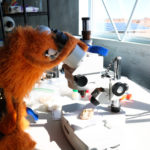Crew 205 EVA Report 16 FEB 2019
EVA #09
Author: D. Robson, Executive Officer
Purpose of EVA: Exploration of geology on Kissing Camel Ridge East and testing of drone capabilities
Start time: 1300
End time: 1520
Narrative: After the first EVA (#08) came back safely and reported favourable ground conditions the second EVA of Sol 6 decided to go ahead as planned. The team began pre-EVA preparations at 1220, and entered the airlock for depressurisation at 1305. The team of 4 drove South East along Cow Dung Road away from the Hab towards Robert’s Rock Garden, using the rovers Spirit and Opportunity. During this travel H. Blackburn’s right breathing tube came out of the backpack (remaining connected to the helmet), so the team stopped to fix it and it remained in working condition for the rest of the EVA. Communications with the Hab was lost as they passed behind the ridge as expected.
The team passed through Robert’s Rock Garden and parked on the South side of the Ridge, and here tested flying the drone in EVA suits to ensure its workability, which was successful if a little inaccurate in the wind. The team then walked back through the garden to ascend from the North side of the Ridge. This was done to re-establish and preserve comms with the Hab during the ascent which worked as planned. The team began their ascent at 1342. H. Blackburn’s radio battery died at 1345 so the team remained within shouting distance for safety, and the crew has discontinued its use. Soon after, the breathing tube on M. Grulich’s EVA backpack also detached in the same manner as H. Blackburn’s had earlier. Both suits have been set aside for work tonight to determine their usability. In addition, Grulich’s helmet had a problem, in that the indented “flap” became detached from the top of its join to the helmet and so was pressing down on her head and shoulders. Grulich didn’t notice this problem until the other team members inspected her suit when the breathing tube came out, so we are unable to determine a cause or time of malfunction. The helmet, in addition to the suit is set aside awaiting repairs. At 1407 the team reached the summit.
While at the top they took photos for outreach and tested the drone along with its vertical camera capabilities. The drone had difficulty maintaining a stable position at the summit due to the increased wind, so the team decided to land it safely.
The team noted that the South side descent appeared to be easier than their North side ascent, and so informed the Hab of their intent to climb down this way. The Hab acknowledged and wished them luck before the comms stopped as they went down the far side. The team reached the bottom safely and returned to Spirit and Opportunity and drove back towards the Hab at 1505.
Having accomplished their mission objectives early, the team decided to stop at the Mars Society MDRS sign on Cow Dung Road south of the Hab, and take some photos together there too. They also use this opportunity for a final test flight of the drone and its camera. Again, the drone flight was hampered by the wind although some photos were taken. The team returned to the Hab airlock at 1535.
Destination: North Ridge, South side base and summit
Coordinates: 0518350/4251450
Participants: Veronica Trivino (CO), Maria Grulich (MEDIA), Hannah Blackburn (COMMS), Natalia Larrea (HSO)
Roads and routes per MDRS Map: South East on Cow Dung Road, parked Southside of Robert’s Rock Garden and walked North to South over Kissing Camel Ridge East before returning by rover to the Hab on Cow Dung Road again.
Mode of Travel: Driving (Spirit & Opportunity) and walking (from 0518400/4249400 to 0518400/4248900 – from North to South side of Kissing Camel Ridge East)










You must be logged in to post a comment.